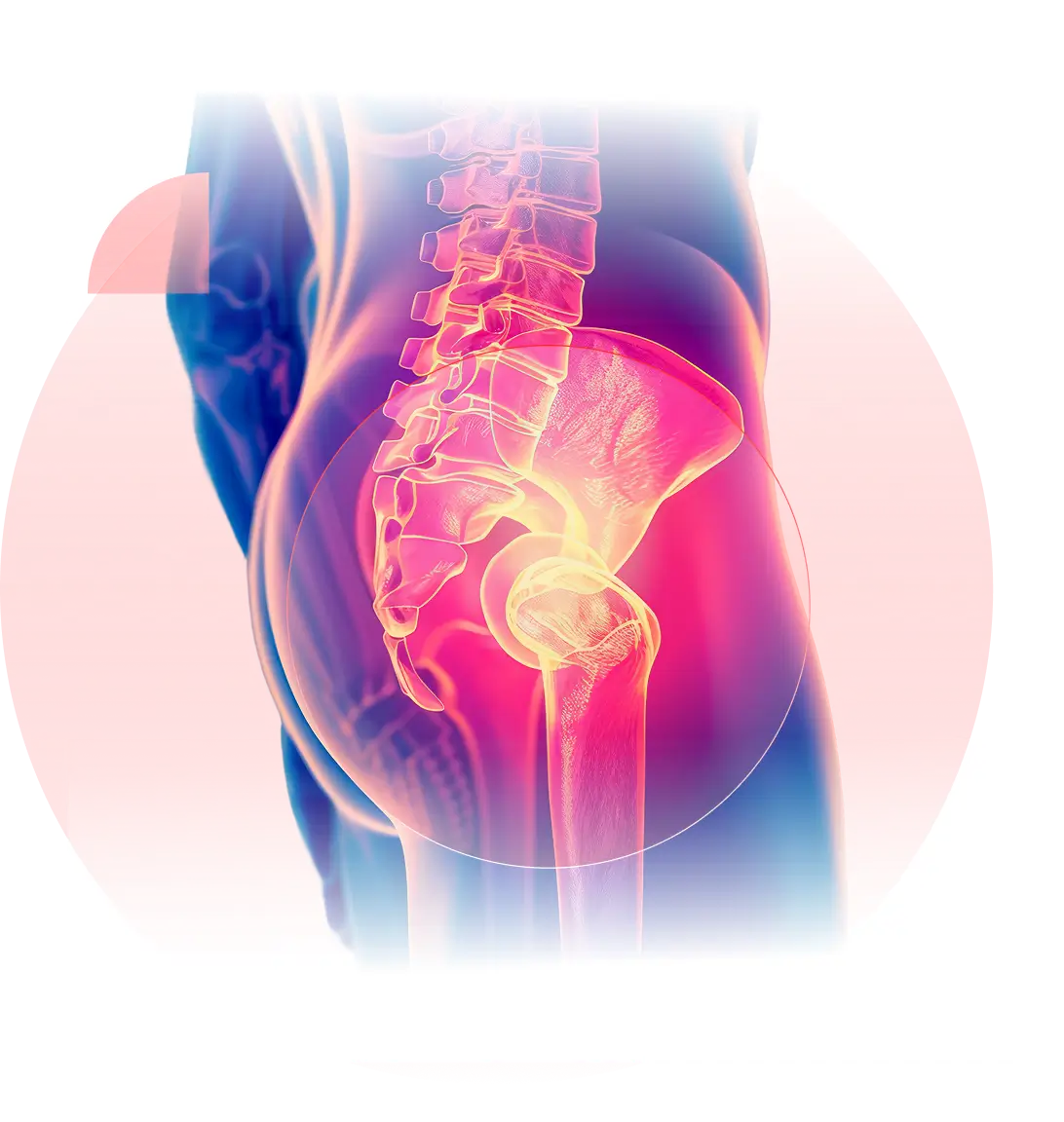Orthopedic Hip Pain Relief in Dallas — Walk, Sit & Sleep Again
Hip pain is common after car accidents, falls, or repetitive stress. Injuries like labral tears, bursitis, and arthritis inflame the hip joint, causing stiffness and groin pain. Without early evaluation, problems progress into chronic arthritis or mobility loss. Learn more about IT Band Syndrome and Knee Pain.

Pain in groin or
outer hip
Clicking, catching,
or locking
Pain lying on
affected side
Limping or reduced
hip motion

Why Choose Us?
Fellowship-trained hip and pain doctors
Same-/next-day injury evaluations
Non-opioid-first care: cortisone, PRP, therapy
Advanced arthroscopy and minimally invasive surgery
Physical therapy and strengthening
Fluoroscopy-guided cortisone injection
Platelet-Rich Plasma (PRP)
Arthroscopy for labral tear or impingement
Hip replacement for severe arthritis
Request Your Same-Day Hip Pain Evaluation
Don’t wait in pain — our expert spine specialists are available for same-day evaluations.
Hip clicking, catching, or locking after a fall or sports injury may suggest a labral tear. MRI confirms damage and guides whether therapy, injections, or arthroscopy is best. Learn more on our Hip Pain page.
Yes. Direct trauma from falls or crashes can inflame the bursae, causing pain on the outer hip and difficulty lying on that side. Injections and therapy reduce swelling. Learn more on our IT Band Syndrome page.
Most patients can walk the same day, with mild soreness for 24–48 hours. Avoid running, squats, or impact sports during that period so the injection works effectively. See more on our Therapies page.
Yes. Cortisone injections reduce pain and stiffness, while PRP can improve tendon and joint healing. Both approaches are non-opioid-first strategies. Learn more about biologics at our PRP page.
If you cannot walk normally, have persistent groin pain, or hear clicking/catching after trauma, imaging is essential. X-rays check for fracture; MRI detects labral or cartilage injury. Learn more at Hip Pain.
Delaying care can allow labral tears or bursitis to worsen into arthritis and chronic disability. Early evaluation and treatment—therapy, injections, or arthroscopy—shorten recovery and protect long-term function. Learn more on our Leg, Hip & Foot Hub.